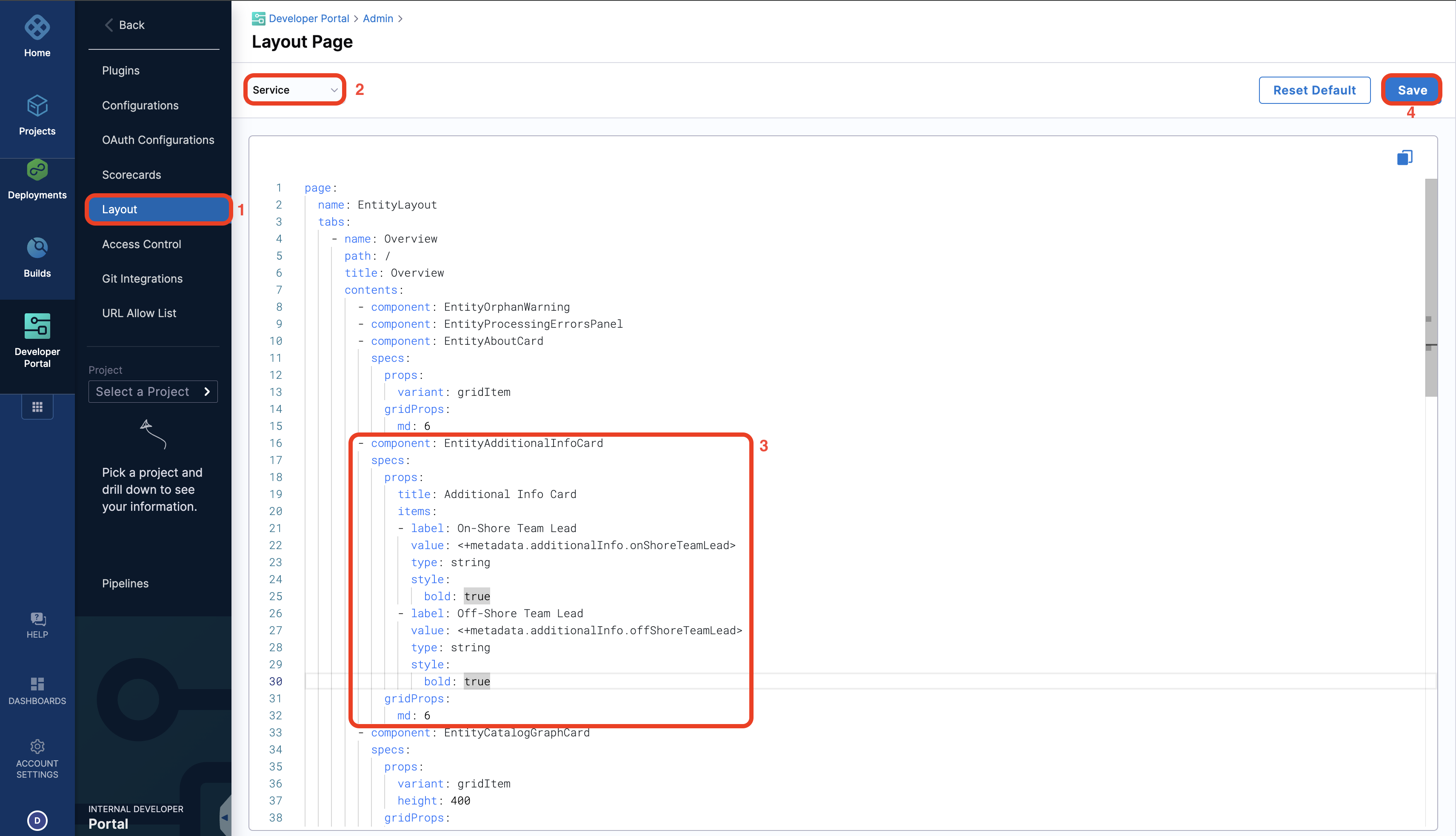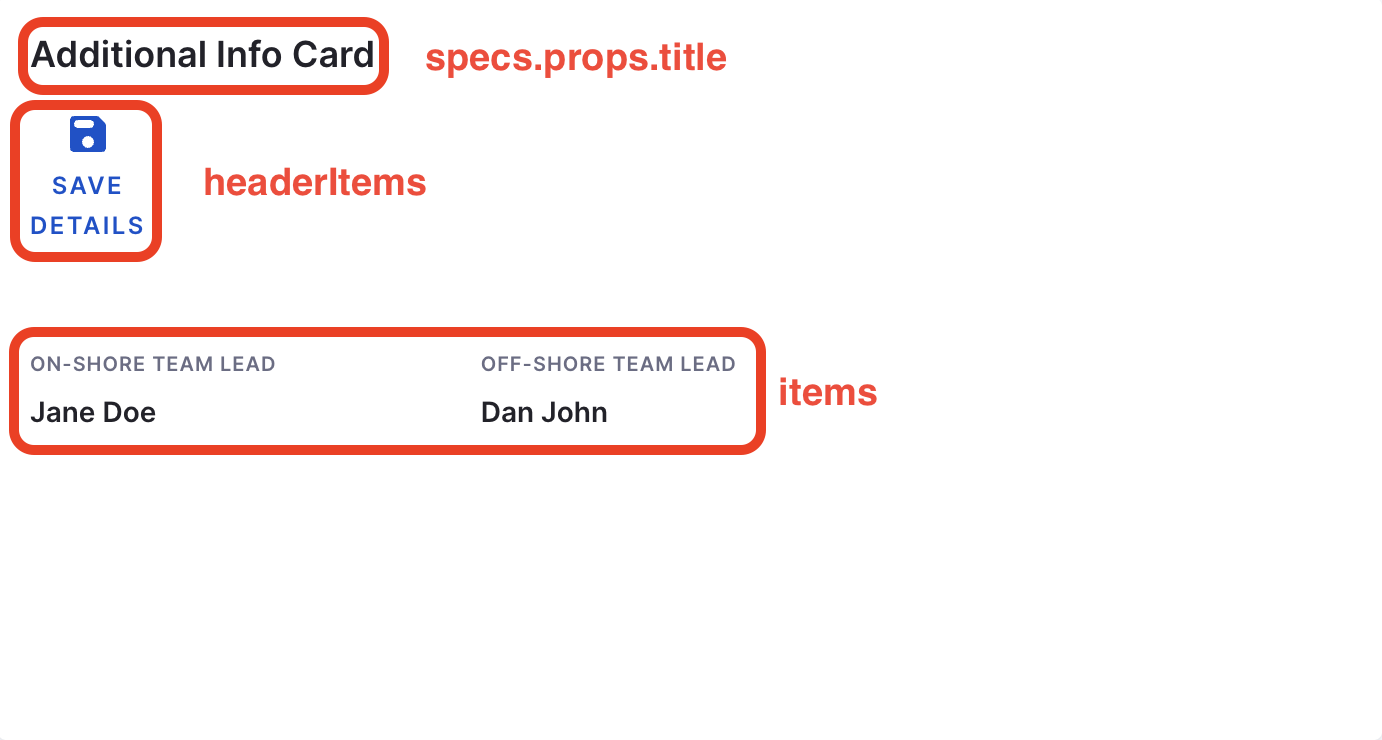Usage of Catalog Metadata Ingestion APIs
Introduction
In this tutorial we will be using the catalog metadata ingestion APIs to add additional metadata for the software components in the catalog, display them in the component overview page using additional info card and use the same data to input values in workflows using Workflow UI Pickers.

Pre-requisites
- You must have components registered in your software catalog. If you don't have any components registered, follow this tutorial to register one. We recommend you to register this software component for this tutorial.
Add a new metadata
- Now using the following cURL command add a new metadata
onShoreTeamLeadin all your software component of typeservicesand using the tagjava
curl --location 'https://app.harness.io/gateway/v1/catalog/custom-properties' \
--header 'Harness-Account: <Add_YOUR_Account_ID>' \
--header 'Content-Type: application/json' \
--header 'x-api-key: <Add your key>' \
--data '{
"properties": [
{
"field": "metadata.additionalInfo.onShoreTeamLead",
"filter": {
"kind": "Component",
"type": "service",
"owners": [
"Add the User Group Owning the services"
],
"lifecycle": [
"experimental",
"production"
],
"tags": [
"java"
]
},
"value": "John Doe"
}
]
}'
- Additional Info Card
- Workflows UI Picker
In case you want to display the same information you have ingested on your Overview page as an additional card, follow the steps below.
- Go to the Layout Page and under Admin and add the following for Services and Save it.
- component: EntityAdditionalInfoCard
specs:
props:
title: Additional Info Card
items:
- label: On-Shore Team Lead
value: <+metadata.additionalInfo.onShoreTeamLead>
type: string
style:
bold: true
- label: Off-Shore Team Lead
value: <+metadata.additionalInfo.offShoreTeamLead>
type: string
style:
bold: true
gridProps:
md: 6

We had already added the offShoreTeamLead in the catalog-info.yaml as we have recommended above under the pre-requisites, if you haven't used the same, you'll get a data not found error for the field.
- Now go to the FoodService Software Component in the Catalog and you'll find an additional info card populated with information we ingested using the API above. You can read more about additional info card

In case you need to use the data present in your catalog as an input for the workflows, you can do so by using the EntityFieldPicker.
Here's an example workflow template that uses the onShoreTeamLead as Owner for the new service being created.
## Example template.yaml
...
owner:
title: Owner
type: string
description: Team Lead the owner of this service
ui:field: EntityFieldPicker
ui:displayField: metadata.additionalInfo.onShoreTeamLead
ui:options:
catalogFilter:
kind:
- Component
- Service
...
The ui:displayField fetches all the onShoreTeamLead names from the catalog.
### Complete Example of a service onboarding template.yaml
apiVersion: scaffolder.backstage.io/v1beta3
kind: Template
# some metadata about the template itself
metadata:
name: react-app
title: Create a new service
description: A template to create a new service
tags:
- nextjs
- react
- javascript
# these are the steps which are rendered in the frontend with the form input
spec:
owner: debabrata.panigrahi@harness.io
type: service
parameters:
- title: Service Details
required:
- template_type
- public_template_url
- owner
properties:
template_type:
title: Type of the Template
type: string
description: Type of the Template
public_template_url:
title: Give a Public template URL
type: string
description: Give a Public Cookiecutter Template
owner:
title: Owner
type: string
description: Team Lead the owner of this service
ui:field: EntityFieldPicker
ui:displayField: metadata.additionalInfo.onShoreTeamLead
ui:options:
catalogFilter:
kind:
- Component
- Service
# This field is hidden but needed to authenticate the request to trigger the pipeline
token:
title: Harness Token
type: string
ui:widget: password
ui:field: HarnessAuthToken
# here's the steps that are executed in series in the scaffolder backend
steps:
- id: trigger
name: Creating your react app
action: trigger:harness-custom-pipeline
input:
url: "Your PIPELINE URL"
inputset:
service_owner: ${{ parameters.owner }}
template_type: ${{ parameters.template_type }}
public_template_url: ${{ parameters.public_template_url }}
apikey: ${{ parameters.token }}
# some outputs which are saved along with the job for use in the frontend
output:
links:
- title: Pipeline Details
url: ${{ steps.trigger.output.PipelineUrl }}
Conclusion
Using the Catalog Metadata Ingestion API, you can source information into your catalog from internal systems such as cost trackers, service health checkers, security scans, or even from simple spreadsheets tracking personnel details and use them to just display the information to users as wells as use them as an input for workflows.